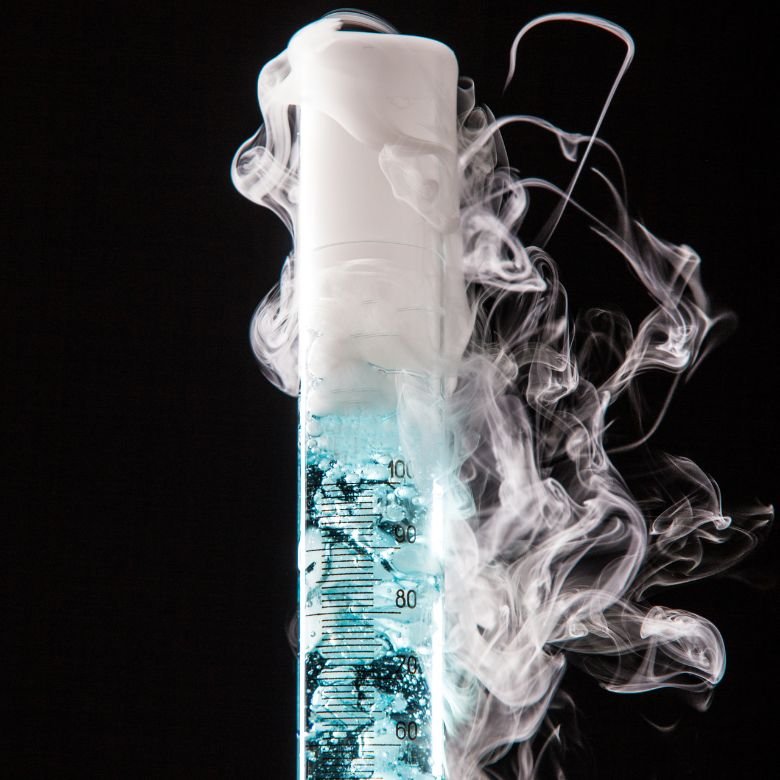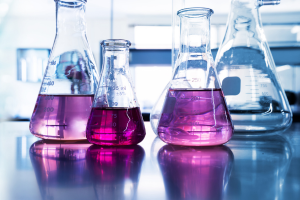Significance of alkanes, alkenes and alkynes
Aliphatic hydrocarbons are valuable raw materials for various industries. They are mainly derived from natural resources. The most important sources of alkanes, alkenes and alkynes include crude oil, natural gas and pit coals. These raw materials were formed from plant and animal matter as a result of exposure to the right atmospheric conditions (high pressure and temperature) over millions of years. Aliphatic hydrocarbons are separated from crude oil or natural gas by means of, among other things, fractional distillation. They themselves are the main raw material for producing more complex organic compounds.
Alkanes, alkenes and alkynes are widely used not only in the industry, but also in everyday life. Gases such as methane, ethane, propane or butane are components of gases, e.g. for cookers or as fuel for heating buildings. Some alkanes are included in petrol and paraffin, which are used in transport. Heavy hydrocarbons, on the other hand, are components of asphalt. Most of these compounds are used as raw materials and solvents in the chemical industry. Alkene monomers are used to produce polymers such as polyethylene and polypropylene. These compounds, together with some additives, are commonly referred to as plastics. The alkynes are mainly used in the chemical industry, where they serve as intermediates for the production of glycerine, alkanes and plastics.
Comparison of alkanes, alkenes and alkynes
Molecular structure
Considering the molecular structure of alkanes, alkenes and alkynes, it is clear that there are significant similarities between the individual molecules. For both saturated and unsaturated hydrocarbons, the characteristic common element is the hydrocarbon chain, made up of carbon atoms linked together. In addition, each of them forms a bond with two or three hydrogen atoms (note that carbon in organic compounds is always tetravalent). The most important element according to which aliphatic hydrocarbons are divided is the presence of an unsaturated bond in their structure. This bond is not present in alkanes, where all bonds are single and covalent. Atoms connected with single bonds can rotate around them, which leads to the formation of isomers known as conformers. Alkenes contain one unsaturated double bond in their hydrocarbon chains. Around this bond, the molecule is rigid and all atoms lie in one plane. A higher degree of unsaturation is found in alkynes, where one triple bond is present. In the part of the molecule where it is present, the linear structure of the chain is preserved.
Physical properties
Alkanes, alkenes and alkynes are very similar in their physical properties. Each of these three groups of compounds form a homogeneous series, in which the characteristics of compounds change analogously as the length of the hydrocarbon chain increases. Aliphatic hydrocarbon molecules are non-polar. They are held together only by weak van der Waals forces. Consequently, they are very poorly soluble in water, which is a polar solvent. In contrast, they are very soluble in benzene or ethers, for example. The physical state of alkanes, alkenes and alkynes depends on the length of their hydrocarbon chain. Low hydrocarbons, which have up to 4 carbon atoms per molecule, are gases, those having 5 to 18 are liquids and higher hydrocarbons, i.e. those containing more than 18 carbon atoms in the chain, are solids. Also, as the length of the hydrocarbon chain increases, a reduction in volatility (increase in boiling point) and density is observed.

Chemical properties
While alkanes, alkenes and alkynes hardly differ in their physical properties, this is not the case in terms of chemical properties, where the key role is played by the unsaturated bond. Alkanes, as saturated compounds without multiple bonds, are chemically passive. They do not discolour bromine water and do not undergo nitration. In contrast, they react with halogens (free radical substitution). They are flammable and, depending on the air supply, undergo complete combustion, semi-combustion or incomplete combustion. Alkenes and alkynes are distinctly different from alkanes due to the presence of a multiple bond (alkynes are even more reactive than alkenes). The double and triple bond present in their molecules is impermanent and easily broken down. As a result, alkenes and alkynes readily undergo addition, polymerisation or hydrogenation reactions. They also react violently with bromine, iodine and chlorine. This feature is used in a chemical test which distinguishes saturated from unsaturated hydrocarbons. It is called the bromine water test. Alkanes do not discolour bromine water, while alkenes and alkynes do, because the multiple bond breaks and bromine is attached to the hydrocarbon chain.
Preparation
Alkanes, alkenes and alkynes are prepared by various reactions and processes. Alkanes can be obtained from alkenes and alkenes from alkynes by a hydrogenation reaction in which multiple bonds are broken and hydrogen atoms are attached to the hydrocarbon chain. The Wurtz reaction or the reduction of alkyl halides using organometallic compounds, the so-called Grignard compounds, is also used to synthesise alkanes. Alkenes are usually obtained by dehydrogenation of alkanes. Alkenes from alkanes are also obtained by cracking. Note, however, that only long-chain molecules are subjected to it. Alkynes are obtained by dehydrohalogenation of dihalogenoalkyls and tetrahalogenoalkyls and by reactions of sodium acetylides with primary alkyl halides. In addition, on an industrial scale, alkynes are obtained by oxidation of methane and by treating carbide with water.

